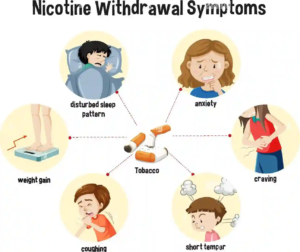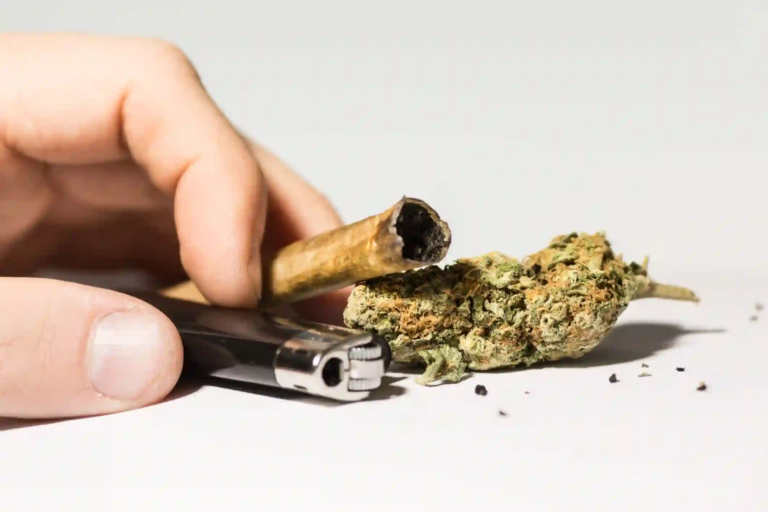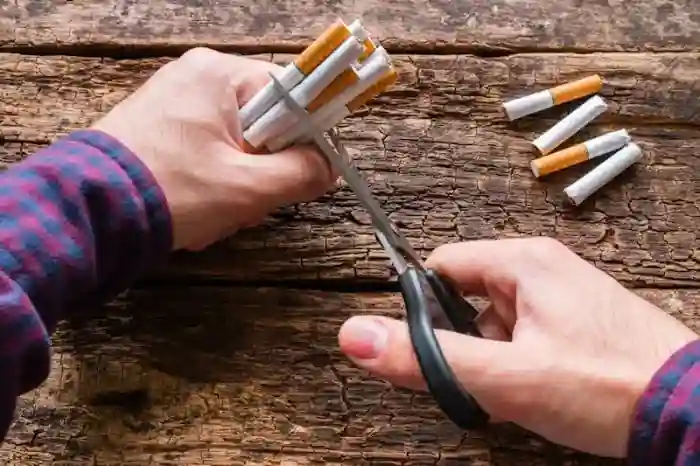
Quitting smoking especially going cold turkey is one of the most health-positive steps anyone can take. But quitting nicotine all at once often comes with unexpected withdrawal symptoms, including cough, craving, irritability, trouble concentrating, anxiety and depression, appetite and weight gain, and other physical symptoms. Understanding these side effects, why they occur, and how to manage them is essential when deciding ways to quit smoking and stop smoking for good.
In this article we’ll explain:
- What nicotine withdrawal is and why it happens
- Common symptoms of nicotine withdrawal — cough, craving, irritability, physical symptoms
- Effects of quitting smoking suddenly versus more gradual methods
- Benefits of quitting smoking despite the temporary discomfort
- Effective ways to quit smoking, including nicotine replacement therapy (NRT), behavior changes, and support systems
- How our Extreme Anti Smoking System can help
- When to talk to your doctor or a healthcare provider for help
If you’re ready to quit smoking and want a personalized plan, our blog post
Quit Smoking Cessation dives deeper into proven strategies and resources. Be sure to check that out after you finish here.
Understanding Nicotine and Nicotine Dependence
Nicotine is a powerful stimulant found in every cigarette. It targets the brain’s dopamine system, creating a cycle of nicotine dependence. Every time you smoke a cigarette, your brain gets a small hit of pleasure reinforcing the habit.
Nicotine leaves your body quickly, and as levels drop, you experience a craving. That craving is part of nicotine withdrawal, and signals why so many people find it so hard to stop smoking. The good news is, nicotine withdrawal symptoms are temporary — though sometimes intense.
What Are Withdrawal Symptoms?
Physical Symptoms of Nicotine Withdrawal
When you quit smoking suddenly known as quitting cold turkey you may experience:
- Cough and chest tightness, as the lungs start repairing
- Increased mucus out of the lungs, as cilia recover
- Headaches, dizziness, and fatigue
- Trouble concentrating or sleeping, as the body adapts
- Irritability, anxiety and depression, common emotional withdrawal symptoms
- Cravings for nicotine, often intense and sudden
- Weight gain, because metabolism slows and hunger increases
- Hungrier feelings throughout the day
- Mouth busy wanting a cigarette to occupy hands and mouth
These physical symptoms and mood changes can peak around 2–3 days after quitting and ease over several weeks. But nicotine withdrawal can last longer for some people even months though usually less intensely.
Timeline of Withdrawal Symptoms (Days of Quitting)
- First 24 hours: Nicotine leaves your body. You’ll have the strongest craving, possibly headaches, irritability, and trouble concentrating.
- Days 2–3: Physical symptoms peak cough, mucus, chest tightness, trouble sleeping.
- Weeks after quitting: Emotional symptoms like anxiety and depression ease.
- Months later: Cravings may occur but are milder and easier to manage.
Why Quit “Cold Turkey”?
Going cold turkey means quitting smoking suddenly, without tapering or nicotine replacement. It’s one of the ways to quit smoking, and for some people it works best they find a clean break helps them “quit for good.” But it does come with stronger withdrawal symptoms compared to gradual methods.
Side Effects of Quitting Smoking Suddenly

Everyone’s experience differs. But these side effects of quitting smoking suddenly are common:
- Intense craving for a cigarette
- Increased cough, as lungs clear
- Difficulty concentrating, especially at first
- Mood swings, irritability, anxiety and depression
- Weight gain, because appetite increases and people may snack instead of smoking
Dealing with Cravings
Cravings often hit hardest in the first few days. Try these effective ways to quit:
- Keep hands and mouth busy chew gum, hold a pencil, knit
- Practice deep breathing inhale deeply for 4 seconds, hold, exhale
- Drink lots of water or drinking plenty of water helps flush nicotine
- Go for a walk, exercise, or do physical activity it distracts and boosts mood
Managing Cough and Lung Repair
A cough after quitting is a sign your lungs are improving. To help manage it:
- Drink plenty of water and eating healthy foods
- Use a steam inhaler or warm beverages
- Gently exercise or going for a walk to help mucus clear
Benefits of Quitting Smoking Despite the Side Effects
As uncomfortable as quitting can be, the health benefits of quitting smoking begin almost instantly:
- Within 20 minutes, heart rate and blood pressure drop
- After 48 hours, nerves start repairing, sense of taste and smell improve
- Within weeks, lung function increases and cough improves
- Within months, risk of heart attack and stroke decreases
- Long-term, your risk of cancer and chronic illnesses falls dramatically
These advantages reinforce why quitting is worthwhile even if the first few weeks are tough.
Ways to Quit Smoking Choose What Works for You
Different methods suit different people. Consider:
Nicotine Replacement Therapy (NRT)
Nicotine replacement tools like gum, lozenges, patches, inhalers, and nasal spray deliver controlled nicotine. They ease withdrawal symptoms by reducing cravings and irritability.
Effective ways to quit smoking with NRT include:
- Wearing a patch to maintain baseline nicotine
- Chewing gum/lozenges for breakthrough cravings
- Combining patch + gum for best results (as per guidelines)
Behavioral Support and Counseling
Add talk therapy, quitlines, and support groups to help manage mood, habit and triggers.
Cold Turkey or Gradual Reduction
- Quitting cold turkey means no nicotine replacement a clean break
- Alternatively taper off cigarettes over weeks while using NRT
Our System Approach
The Extreme Anti Smoking System works holistically by combining:
- Guided mindset reset
- Personalized plan to quit smoking
- Step-by-step support to handle physical and emotional cravings
- Practical techniques like deep breathing, staying hydrated, physical activity
Symptoms of Nicotine Withdrawal — What to Expect
Nicotine withdrawal symptoms fall into three categories:
Physical Symptoms
- Cough, mucus, chest tightness
- Headache, dizziness
- Weight gain, increased appetite
- Sleeping problems
Emotional and Mental Symptoms
- Irritability and anger
- Anxiety and depression
- Trouble concentrating or sleeping
- Strong craving
Duration of Withdrawal Symptoms
- Peak in the first 2–3 days
- Improve over the next 2–4 weeks
- Occasional cravings can continue for months
Common Challenges and How to Overcome Them
Trouble Concentrating or Sleeping
- Avoid caffeine late in the day
- Try relaxation techniques before bedtime
- Engage in light exercise
Cravings (“Mouth busy”)
- Use sugar-free gum or healthy snacks
- Keep hands busy crafts, journaling, fidget toys
Weight Gain and Hungrier Feelings
- Drink lots of water, eat healthy snacks
- Increase physical activity
- Track portions, avoid sugary desserts
Nicotine Replacement Therapy (NRT) Insights
What NRT Can Do
NRT delivers lower, controlled doses of nicotine to ease nicotine withdrawal. It helps with:
- Diminishing cravings
- Reducing irritability
- Easier transition to being nicotine-free
Types of NRT
- Nicotine patches — 16–24 hours protection
- Nicotine gum or lozenges — fast relief during intense cravings
- Inhalers — focus on hand-to-mouth ritual
- Nasal spray — fastest delivery, but requires prescription in some places
Always read instructions carefully, use at least 8–10 weeks, taper off slowly.
Effective Ways to Quit Smoking — Beyond Meds
Behavioral Changes
- Identify triggers (coffee, stress, after meals)
- Replace with healthy habits — go for a walk, drink water
- Use support systems — family, friends, online forums
Mindset & Motivation
- Focus on health benefits of quitting smoking
- Keep a log of progress
- Reward milestones — 1 day, 7 days, 1 month smoke-free
Deep Breathing & Relaxation
- Pause and take 5 slow breaths when craving hits
- Practice mindfulness to reduce anxiety
Staying Active
- Regular physical activity boosts mood
- Helps manage weight and reduce cravings
Going Cold Turkey vs. NRT: Pros & Cons
Going cold turkey:
- Pros: immediate clean break, no nicotine after first cigarette
- Cons: intense withdrawal symptoms — irritability, cough, cravings
Nicotine replacement therapy:
- Pros: reduces withdrawal strength, easier transition
- Cons: still introduces nicotine, needs proper tapering
Your choice depends on nicotine dependence, past attempts, and personal preference. Our system offers a path that can work with or without NRT.
How Our System Helps You Quit
Personalized Quit Plan
- We guide you from day one — whether you're quitting cold turkey or using nrt
- Focus on physical symptoms, mental health, and lifestyle shifts
Managing Withdrawal Symptoms
- Tools for withdrawal symptoms, like cough, craving, irritability
- Advice on drinking plenty of water, eating healthy, staying active
Long-Term Support
- Continued check-ins to handle weight gain, mood
- Techniques to keep from relapsing — staying busy, going for walks
Community & Mindset Support
- Encouraging messages, community interactions
- Reinforce why quitting matters — health, family, finances
Benefits of Quitting Smoking Even With Side Effects
Even with the temporary downsides of quitting:
- Your lungs start healing — less cough, better breathing
- Heart health improves; blood pressure decreases
- Cancer risk starts dropping
- Taste and smell return
- Feel more energy, less mucus
The benefits of quitting smoking are real and compound over time. Every day smoke-free is a win.
Outbound Resource for More Help
For extra tips on quitting smoking, check out this trusted blog on nicotine withdrawal. It provides helpful advice without selling any products.
Hints for Going Cold Turkey Successfully
- Stay hydrated — water, herbal teas
- Keep busy — craft, chores, light exercise
- Change routines — avoid triggers like coffee or bars
- Deep breathing when urge hits
- Reach out to support: friends, family, forums
When to Talk to a Doctor or Healthcare Provider
If you're experiencing:
- Severe anxiety or depression
- Persistent insomnia
- Major weight gain or other health issues
…then talk to your doctor or healthcare provider for help. They may suggest NRT, medications, or therapy.
FAQs
Will I gain a lot of weight?
Yes, appetite often increases and metabolism changes. But healthy eating, drinking lots of water, and exercise can keep weight gain minimal.
How long will my cough last?
A cough is often part of healing lungs. It can persist for a week or two, but should gradually improve.
Can I use nicotine replacement therapy?
Absolutely. NRT is one of the best ways to quit smoking and ease nicotine withdrawal symptoms.
Summary: Side Effects vs. Rewards
| Withdrawal Side Effects | Benefits of Quitting Smoking |
| Cravings, cough, irritability, mood | Better breathing, healthier lungs |
| Sleep trouble, concentration issues | Lower risk of cancer and heart disease |
| Weight gain, increased appetite | Improved energy, taste, and smell |
| Anxiety and depression potential | Longer life and better quality of life |
Our system supports you through it all — from handling withdrawal symptoms to sustaining a smoke-free life.
Final Thoughts & Call to Action
Quitting nicotine — whether cold turkey or with NRT — is challenging, but you’re quitting for good and protecting your health. The short-term side effects of quitting smoking suddenly are real, but temporary. The long-term benefits are life-changing.
And don’t forget to explore our detailed guide on Quit Smoking Cessation for a personalized action plan.
Whether you choose nicotine replacement therapy or go cold turkey, know that you’re making the best decision for your health. And our system is here to help you quit and support you through every step.







